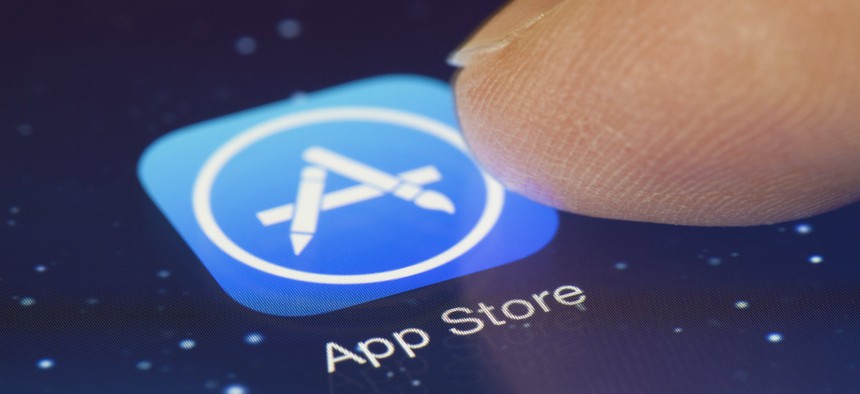Zombie Invasion: Rethinking Undead Mobile Apps

Plenty of old, outdated, “zombie” native mobile apps are still around, swaying and shuffling around the app stores without serving a useful purpose for the government agencies that created them.
From the 1920s to the 1950s, families regularly gathered around the radio – the coolest technology of the time – to listen to news updates or be entertained. Today, when we can stream our favorite music or movies or talk shows on our mobile devices anytime and anywhere, the thought of families glued to the living room radio for a 7 p.m. variety show seems nostalgic and wildly old-fashioned.
The same can be said about the early app marketplace. Companies and government agencies regularly launched single-function apps that typically didn’t take advantage of the power of mobile technology – for example, apps that offered “tips” on a topic like fire safety or provided office locations and hours. They were the coolest technology available, so people were excited about using them, even when they couldn’t do more than get the day’s weather forecast or share a song with a friend.
As mobile technology advanced, though, we evolved into a society of what amounts to a computer in almost every pocket, almost all the time. We expect our favorite apps to let us complete myriad tasks, not just one. That’s all good, except for the fact that plenty of old, outdated, “zombie” native mobile apps are still around, swaying and shuffling around the app stores without serving a useful purpose for the government agencies that created them.
Zombie Apps: So What?
When app technology was new, agencies’ first forays into the marketplace let constituents interact with government in simple ways – checking the status of a mailed-in business license payment, for example. Over time, such activity was proven out by high constituent use.
Now, business licensing and similar functions often are core processes for government agencies. But a surprising number of agencies have hung onto obsolete zombie apps, even as use has dwindled. Keeping a barely-breathing zombie app alive can make an agency look like it isn’t paying close attention to its constituents’ transition to mobile or looking for new ways to deliver services where those customers already are. Not only are those agencies missing an opportunity to better attend to their constituents, but they’re also overlooking the chance to create internal efficiencies and reduce costs.
Just as gathering around the radio in the 1940s evolved into gathering around a television set in the 1960s, mobile users have progressed from short interactions with solo-function apps to heavy reliance on apps that offer broad sets of services. The 2015 U.S. Mobile App Report from comScore noted that mobile use has grown 50 percent in the last two years and that three-fourths of that growth can be attributed to apps.
Clearly, mobile apps remain an increasingly viable means for interacting with constituents. But government agencies should continually monitor their older apps to make sure they haven’t turned into zombies.
Confronting the Walking Dead
If zombie apps are prowling around the shadowy corners of your agency:
- Decide whether they have any life left. For example, that old app that allows constituents to check the status of a business license payment might still have value as an added piece of an existing, more-robust app that lets users set up business accounts online, file quarterly reports, make electronic payments and receive deadline reminders. In that case, consider adding the zombie’s functionality into a more popular app. Once that is completed, kill the zombie by removing it from the app stores.
- Consider whether the zombie fits into the broader picture of what your agency wants to achieve. Say, for instance, that a goal is to minimize the time constituents have to stand in line at a brick-and-mortar facility. An outdated app that might have allowed users to check when their driver’s license renewals were coming due might be enhanced to allow a customer to use a smart phone to reserve a spot in a queue, fill out forms in advance and show up at the appointed time. Better yet, you could add functionality that allows the user to complete the whole transaction on a mobile device and avoid the trip to your office altogether.
- Not every app deserves to be immortal. If your zombie horde no longer has value to your constituents or fits the mission of your agency, give these walking corpses a peaceful death by removing them from the app stores.
Radio has a foundational places in our culture. But it wouldn’t have remained relevant if it still looked (or sounded) today as it did in the beginning. The same is true of your agency’s apps. Keep examining what your constituents want and how emerging technologies such as Apple Watch and Amazon Echo can help you avoid app zombification.
Nolan Jones is the Director of Innovation for Olathe, Kansas-based NIC Inc., a provider of innovative digital government and secure payment processing solutions for more than 4,300 local, state and federal agencies across the United States.
NEXT STORY: Two-pizza teams feed innovation at DIA






 By
By